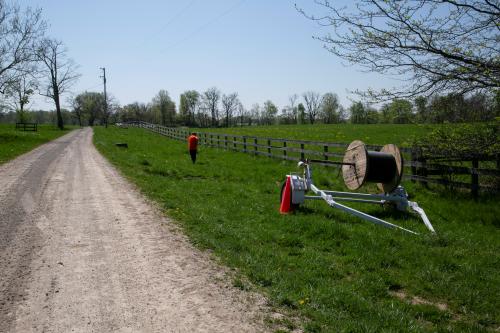Can a problem at a single company cause a globe-spanning internet glitch knocking the websites of the New York Times, BBC, Hulu, U.K. government, PayPal, and many more organizations offline? Unfortunately, the answer is yes, as demonstrated by the approximately hour-long outage that occurred on the morning (in the U.S.) of June 8. The cause was what Fastly, a Content Delivery Network (CDN), referred to as a “service configuration” that the company quickly disabled once its role in preventing websites from loading became clear.
While the outage was quickly fixed, the fact that it occurred at all underscores how the internet isn’t nearly as distributed as we tend to think. There may be billions of internet users and even more internet-connected devices than there are users, but a surprisingly small number of companies are responsible for operating the behind-the-scenes plumbing. As Cloudflare CEO Matthew Prince explained in a 2017 post, the infrastructure of the internet includes hosting services (where the content on websites is stored), companies that ensure that a user who types a web address such as “nytimes.com” into a browser is directed to the right place, CDNs, and companies that quickly move vast amounts of data across cities, countries, and oceans.
While Fastly and most other internet infrastructure companies aren’t household names, they play a vital role in the functioning of the internet. For instance, CDNs work by placing a network of servers across a wide geographic area, bringing those servers closer to internet users. A video streaming company that tried to deliver its content using only a single set of servers located in the northeastern U.S. might find that its users on the West Coast experience more glitches and delays than those in the Northeast. The performance might be even worse for users located overseas. To avoid this, the streaming company could contract with a CDN to replicate its content at dozens of servers around the world. As a result, users in Tokyo, Lagos, and Paris could all stream content from a nearby server, rather than from one located thousands of miles away.
When everything is working well, we don’t generally give internet infrastructure any more thought than we give to the systems for electricity generation and delivery when we turn on a light. But as the June 8 outage illustrated, problems originating within a single infrastructure company can have immediate global consequences.
This is all the more important given that over the last two decades the internet has become an increasingly foundational form of critical infrastructure. The U.S. government currently designates 16 critical infrastructure sectors, including communications, critical manufacturing, emergency services, energy, financial services, food and agriculture, government facilities, health care, information technology, and transportation. The internet isn’t its own sector, and for good reason: While two of the government-designated sectors—communications and information technology—combine to play a central role in providing the internet, none of the sectors can function effectively today without the internet.
Therein lies another challenge when attempting to identify and mitigate internet infrastructure vulnerabilities: It’s difficult to fully assess a potential weak link without knowing the full consequences that would arise if that link were to fail. And given the extraordinary complexity and interdependence of today’s systems, failures in one area can generate a rapid cascade of far-reaching impacts, not all of which are easy to foresee.
Coincidentally, on the same day as the Fastly outage, the U.S. Senate Committee on Homeland Security and Government Affairs held a hearing titled “Threats to Critical Infrastructure: Examining the Colonial Pipeline Cyber Attack.” While there’s no indication that the Fastly incident was due to malicious activity, the fragility it demonstrated is itself a threat to critical infrastructure. Congressional attention to internet infrastructure vulnerabilities in future hearings could provide a timely and valuable opportunity to raise awareness on this under-appreciated issue.
There’s also the question of what can be done to improve internet infrastructure robustness. One clearly beneficial long-term goal would be diversification in the number and types of companies providing infrastructure services. There is high market concentration in internet infrastructure—something that naturally spurs questions about antitrust. But antitrust is an imperfect tool to address this challenge, as levels of market concentration that fall short of being anticompetitive can still be a major concern from a robustness perspective.
An important near-term step is to build a better understanding of the specific vulnerabilities in internet infrastructure and how those can impact other critical infrastructure sectors. Policymakers have devoted significant attention in recent years to the most visible parts of the internet ecosystem, particularly social media companies. They—and the government, policy and business communities more generally—should also be giving attention to ways to better ensure the security of the parts of the internet that we don’t normally see, and that play a far more fundamental role in the critical infrastructure systems we all rely on.
The Brookings Institution is committed to quality, independence, and impact.
We are supported by a diverse array of funders. In line with our values and policies, each Brookings publication represents the sole views of its author(s).







Commentary
How a global website outage underscores the importance of creating a more robust internet
June 10, 2021